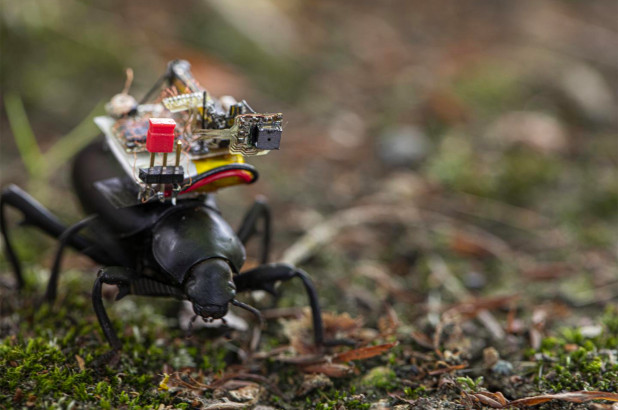University of Washington scientists have developed a tiny, wearable camera that can be mounted on bugs.
This window into a bug’s world weighs just 248 milligrams (8.7 ounces), researchers describe in a paper in Science Robotics, and can stream video at 1-5 frames a second to a mobile phone within 120 meters (400 feet). The makers have demonstrated the camera’s capacity, attaching it both to live beetles and insect-sized robots.
“Vision is so important for communication and for navigation, but it’s extremely challenging to do it at such a small scale,” said Dr Shyam Gollakota of the University of Washington in a statement.
Gollakota realized the battery was a bigger obstacle to tiny recording devices than the camera, something best addressed by minimizing energy demands. Insects themselves provided a clue.
“Similar to cameras, vision in animals requires a lot of power,” said co-author Dr Sawyer Fuller. “It’s less of a big deal in larger creatures like humans, but flies are using 10 to 20 percent of their resting energy just to power their brains, most of which is devoted to visual processing. To help cut the cost, some flies have a small, high-resolution region of their compound eyes. They turn their heads to steer where they want to see with extra clarity… This saves power over having high resolution over their entire visual field.”
Instead of the wide-angle, high-resolution recording devices in smartphones, the team made a 160-by-120 pixel camera they sweep across the area that needs to be studied. They quickly gave up on color images.
Moving the entire machine would also be energy-intensive, so the team put the camera on a Bluetooth-controlled mechanical arm that can turn 60 degrees. “We can track a moving object without having to spend the energy to move a whole robot,” said doctoral student Vikram Iyer. To save even more power the team included a tiny accelerometer and set the camera to only record while in motion, handy since one of the species used is the death-feigning beetle (Asbolus verrucosus).
The beetles the team are using as steeds have been known to carry loads greater than 500 milligrams, so the team were confident these beasts could bear the burden, and so it proved. The beetles were even observed for a year after the cameras were removed to make sure they suffered no lingering effects.
Beetles proved better mounts for the camera than the team’s robots, as the robots’ vibrations blurred the images unless they stopped every time they took a photo.
The authors would like to go further and put their cameras on bumblebees, which they think might be possible if they replace most of the battery weight with very light solar cells, so look out for bee-cam coming soon.





























